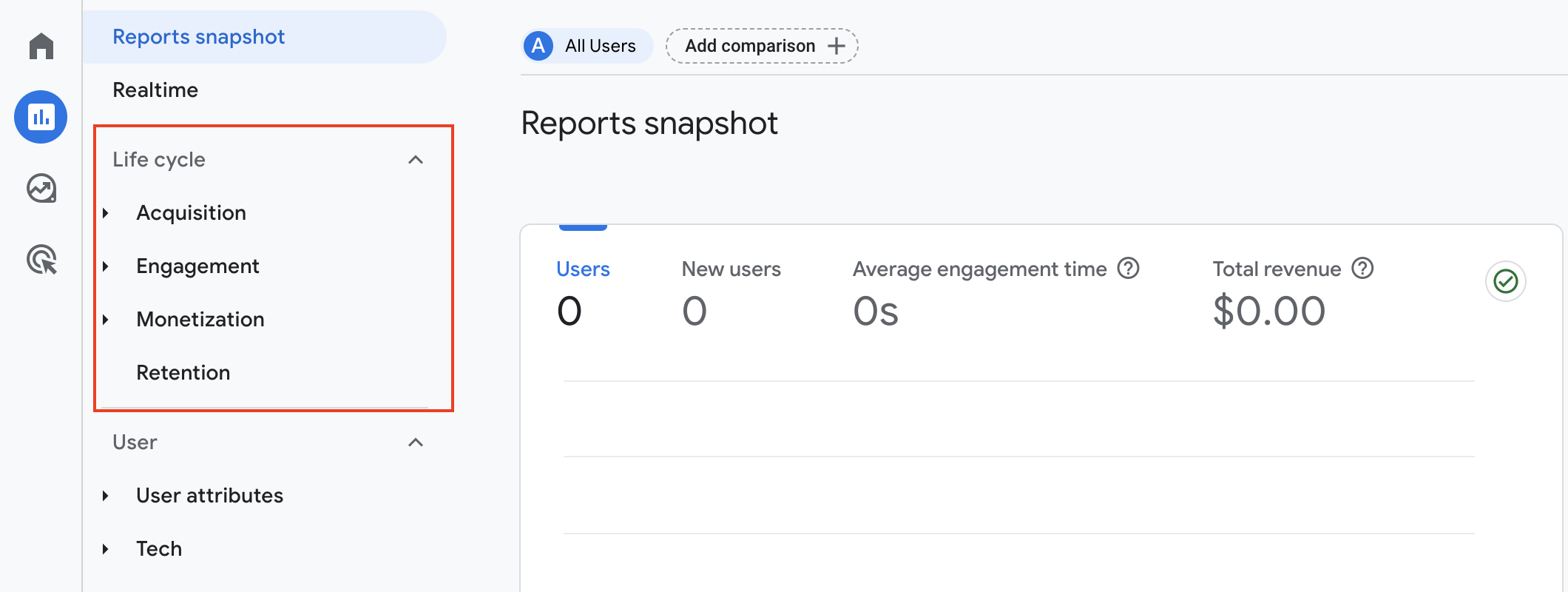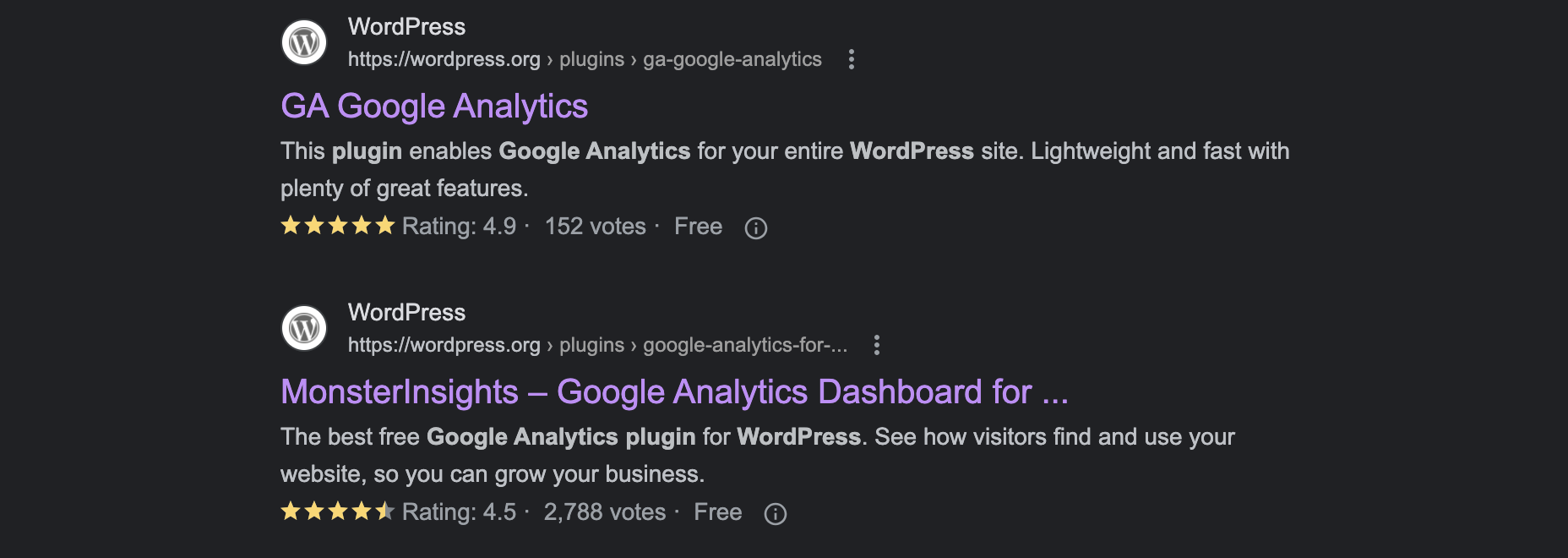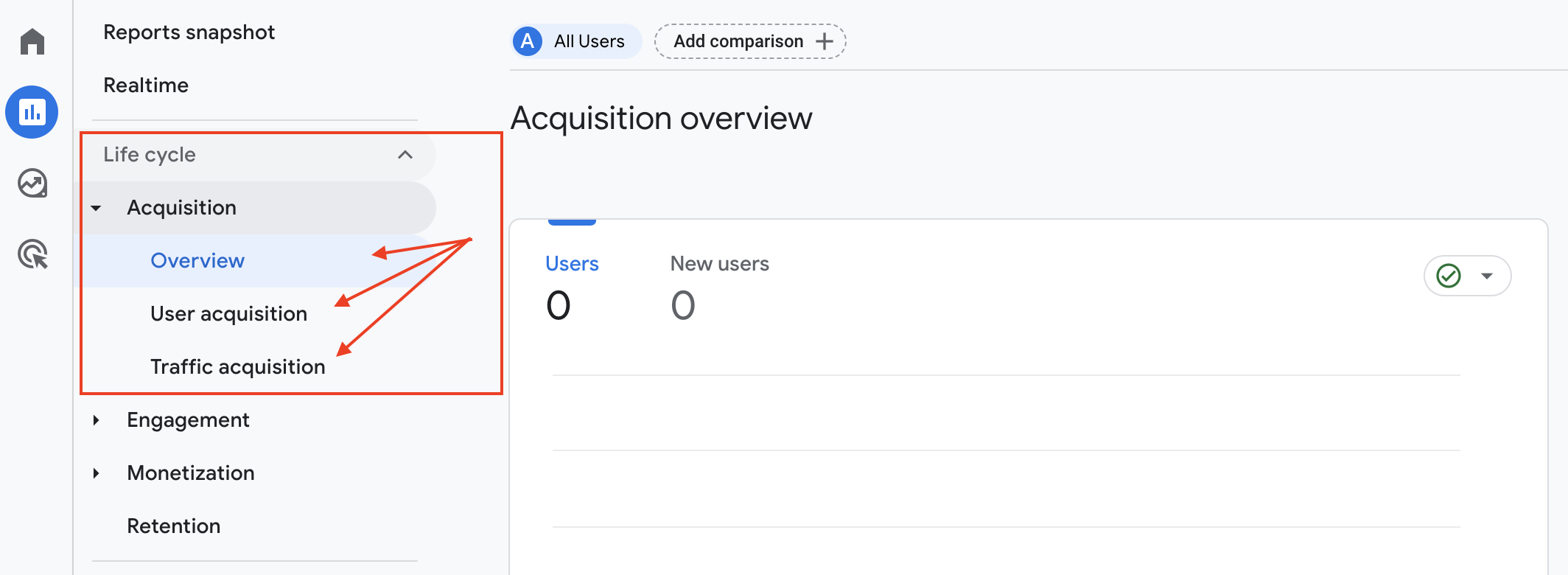Integrating Google Analytics with WordPress: A Simple Guide
In the rapidly evolving digital era, understanding the importance of website analytics is crucial for effective website optimization. Tracking user behavior and engagement provides valuable insights into the performance of your website, allowing you to make data-driven decisions. One of the most powerful tools for this purpose is Google Analytics.
In this guide, titled ‘Integrating Google Analytics with WordPress: A Step-Step Guide,’ we will explore how to integrate Google Analytics with WordPress, a popular content management system (CMS), and leverage its features to optimize your website. Let’s explore a simple step-by-step process to integrate Google Analytics with WordPress and harness its powerful features for website optimization.
Understanding the Importance of Website Analytics
Data plays a pivotal role in effective website optimization. By analyzing the data collected through analytics tools, you can gain valuable insights into various aspects of your website’s performance. From visitor demographics to user behavior, analytics data helps you identify areas for improvement and formulate strategies to enhance user experience and drive conversions.
Benefits of Tracking User Behavior and Engagement
Tracking user behavior and engagement allows you to understand how visitors interact with your website. By monitoring metrics like page views, bounce rate, and session duration, you can gain insights into what is working well and what needs improvement.
Utilizing Google Analytics for Detailed Insights
Google Analytics is a powerful website analytics tool that provides detailed insights into your website’s performance. It allows you to track website traffic, analyze user behavior, measure conversions, and more.
Overview of WordPress as a Content Management System
Before we dive into the integration process, let’s briefly explore WordPress as a content management system. WordPress is a widely used CMS that powers millions of websites worldwide.
WordPress: An Introduction to the Popular CMS
Advantages of WordPress for Website Management
WordPress offers several advantages for website management. Firstly, its intuitive interface makes it easy for anyone, even those without technical expertise, to create and manage a website. Additionally, its extensive library of plugins and themes allows for endless customization possibilities, making it easy to adapt your website to your specific needs.
Finally, WordPress is SEO-friendly, providing built-in features and plugins that help optimize your website for search engines.
Leveraging Analytics to Optimize WordPress Websites
Setting Up Google Analytics Account
To integrate Google Analytics with WordPress, you need to set up a Google Analytics account.
Here’s how you can get started:
1. Creating a Google Analytics Account
To create a Google Analytics account, visit the Google Analytics website and sign up using your Google account.
Linking Google Analytics to Your Website
After setting up your Google Analytics account, link it to your WordPress website. This can be done by adding your website’s URL to your Google Analytics account. Google Analytics will provide you with a unique tracking ID that you need to integrate into your WordPress website to enable data tracking
Get help on how to add the website’s URL in this link.
Obtaining Tracking ID: The Key to Integration
Understanding Key Google Analytics Concepts
2. Exploring Google Analytics Dashboard
The Google Analytics dashboard is the central hub where you can access all the information about your website’s performance. It provides a comprehensive overview of various metrics, reports, and settings.
Navigating Important Metrics and Reports
Google Analytics provides an extensive range of metrics and reports to help you analyze your website’s performance. From visitor acquisition channels to user behavior, time on page, and conversions, the reports offer valuable insights into different aspects of your website.

Customizing Google Analytics Settings for WordPress
Google Analytics offers various customization options that allow you to tailor the tool to your specific needs. These settings include filters, goals, segments, and more.
By customizing Google Analytics for your WordPress website, you can gain deeper insights into your audience, track specific actions, and measure the effectiveness of your marketing campaigns.
3. Installing and Activating Google Analytics Plugin for WordPress
Now that you have a thorough understanding of Google Analytics, it’s time to install and activate a Google Analytics plugin for your WordPress website.
This plugin will streamline the integration process and ensure accurate tracking of your website data. The following steps will guide you through the process:

Overview of Popular Google Analytics Plugins
There are several Google Analytics plugins available for WordPress, each offering unique features and functionalities. Some of the popular choices include:
Google Analytics Dashboard Plugin for WordPress by MonsterInsights,
Analytify, and
ExactMetrics.
These plugins simplify the integration process and provide easy-to-understand analytics reports within your WordPress dashboard.
Step-by-Step Guide on Installing the Plugin
To install a Google Analytics plugin, access your WordPress dashboard, navigate to the plugins section, and click on “Add New.”
Search for the desired Google Analytics plugin and click “Install Now” followed by “Activate” once the installation is complete. This will enable the plugin on your WordPress website.

Configuring Plugin Settings for Accuracy
After activating the plugin, you need to configure its settings to ensure accurate data tracking. This typically involves entering your Google Analytics tracking ID in the plugin’s settings.
Some plugins may require additional configuration, such as enabling advanced features or setting up goals. Refer to the plugin’s documentation for detailed instructions on configuring the settings.
Tracking Essential Metrics
With Google Analytics successfully integrated with your WordPress website, you can now start tracking essential metrics that provide valuable insights into your website’s performance.
Here are a few key metrics to focus on:
4. Analyzing Website Traffic and Visitors
Understanding your website’s traffic and visitor acquisition channels is essential for driving targeted traffic and conversions.
Google Analytics provides valuable information about the sources through which visitors land on your website, such as organic search, social media, and referrals.
By analyzing these channels, you can optimize your marketing efforts to attract the right audience.

Evaluating Bounce Rate and Visitor Engagement
Bounce rate refers to the percentage of visitors who leave your website after viewing only one page. A high bounce rate indicates poor user engagement and may indicate issues such as slow page load times, irrelevant content, or design flaws.
By evaluating bounce rate and visitor engagement metrics, you can identify areas for improvement and enhance user experience.

Tracking Returning vs. New Visitors
Distinguishing between returning and new visitors helps you understand how well your website retains its audience. Returning visitors indicate a level of loyalty and interest in your content, while new visitors signify the effectiveness of your marketing efforts.
By tracking and analyzing these metrics, you can tailor your content and marketing strategies to cater to both new and returning visitors.
Monitoring User Behavior and Engagement
Tracking user behavior and engagement metrics allows you to gain insights into how visitors interact with your website. Here are a few key metrics to monitor:
Analyzing Pageviews, Time on Page, and Session Duration
Pageviews, time on page, and session duration metrics provide insights into how engaged visitors are with your content. By analyzing these metrics, you can identify high-performing pages, understand what holds visitors’ attention, and optimize underperforming pages.
This information enables you to create compelling content that resonates with your audience.

Setting Up Goals for Conversion Tracking
By monitoring goal conversions, you can identify bottlenecks and optimize your website to enhance conversions.
Learn how to set up conversion tracking.
Utilizing Events Tracking for Interactions and Downloads
Events tracking provides insights into user interactions and downloads on your website. It allows you to track specific actions, such as button clicks, video views, or file downloads.
By monitoring these events, you can understand how users engage with your website’s elements and tailor your content and design to optimize user experience.
Assessing Audience Demographics and Interests
Evaluating User Geolocation and Language
Geolocation and language insights help you understand where your audience is located and the languages they prefer. This information is particularly useful for targeting specific regions or creating localized content.
By analyzing user geolocation and language data, you can optimize your website to cater to your audience’s preferences.
Analyzing User Interests and Affinity Categories
Google Analytics provides information about users’ interests and affinity categories. This data helps you understand what topics or categories resonate with your audience.
By analyzing user interests, you can refine your content strategy and tailor your offerings to align with your audience’s preferences.
Customizing Reports for Targeted Audience Insights
Google Analytics allows you to create custom reports to focus on specific audience segments and metrics. By customizing reports, you can gain deep insights into your target audience’s behavior, preferences, and engagement levels.
These insights enable you to make data-driven decisions and optimize your content and marketing strategies.
Analyzing and Optimizing WordPress Performance
Optimizing your WordPress website’s performance is vital for enhancing user experience and achieving better results. Google Analytics provides valuable insights to help you in this endeavor. Here’s how you can analyze and optimize your WordPress website:
5. Optimizing Website Speed for Enhanced Analytics
Website speed is crucial for providing a seamless user experience. Slow-loading pages can lead to higher bounce rates and lower engagement.
Google Analytics provides important information about page load times, allowing you to identify slow-loading pages and take steps to improve website speed. Optimizing website speed includes techniques like optimizing images, enabling caching, and using a CDN (Content Delivery Network).
Analyzing Page Load Time in Google Analytics
Google Analytics provides detailed data on page load times, including average load time and page speed suggestions. By analyzing this data, you can identify areas that require improvement to enhance your website’s performance.
Addressing issues like excessive script loading, large file sizes, or inefficient coding can significantly improve page load times and overall user experience.
Tips to Improve Website Speed and Performance
Improving website speed and performance requires implementing best practices. Some tips to enhance website speed include optimizing images by reducing their file size, minifying CSS and JavaScript files, enabling browser caching, and using a reliable hosting provider.
These optimizations contribute to a smoother user experience and positively impact your website’s performance.
Tracking Website Conversions and Goals
Conversion tracking is essential for measuring the effectiveness of your marketing efforts and optimizing your website for conversions. Here’s how you can effectively track conversions in Google Analytics:
Setting Up Conversion Tracking in Google Analytics
To track conversions, you need to set up goals in Google Analytics. Goals let you define specific actions users take on your website that indicate a successful conversion.
By setting up goals, you can track and measure how well your website is performing in terms of conversions. Once you have set up goals, Google Analytics will provide you with detailed data on conversions and conversion rates.
Integrating E-commerce Tracking for Online Stores
If you run an online store using WordPress, integrating e-commerce tracking with Google Analytics is essential. This allows you to track valuable e-commerce metrics, such as revenue, transactions, conversion rates, and product performance.
By integrating e-commerce tracking, you can gain insights into your customers’ purchasing behavior and optimize your online store for better results.
Analyzing Goal Conversions for Effective Optimization
Analyzing goal conversions provides insights into how users are navigating your website and where they are dropping off in the conversion funnel.
By monitoring and analyzing conversion data, you can identify areas for improvement, optimize your website to enhance conversions, and drive better results.
Utilizing Advanced Google Analytics Features
Google Analytics offers several advanced features that can further enhance your understanding of your website’s performance. Here are some features you can leverage:
Implementing Enhanced E-commerce Tracking
Enhanced e-commerce tracking provides more detailed insights into your online store’s performance. It allows you to track product impressions, add-to-carts, and transactions at a granular level.
By implementing enhanced e-commerce tracking, you can gain deeper insights into your customers’ behavior and optimize your online store accordingly.
Utilizing Custom Dimensions and Metrics
Custom dimensions and metrics provide additional flexibility in tracking user behavior and specific actions on your website. With custom dimensions, you can segment your data based on specific attributes like user types, content categories, or marketing campaigns.
Custom metrics, on the other hand, allow you to track and analyze unique metrics tailored to your specific business goals.
Analyzing Site Search Data for User Insights
Site search data provides insights into what users are searching for on your website. By analyzing site search data, you can gain valuable insights into user intent, content gaps, and popular search terms.
This information enables you to optimize your content and website navigation to better serve your audience.
Conclusion
Integrating Google Analytics with WordPress empowers you to harness the power of data-driven insights to optimize your website effectively. By tracking crucial metrics, monitoring user behavior, and analyzing audience demographics, you gain valuable information to make informed decisions.
This integration helps you enhance user experience, attract targeted traffic, and increase conversions. Following Integrating Google Analytics with WordPress: A Step-Step Guide ensures you are equipped to continuously refine your site’s performance and achieve your business goals.
If you encounter any issues during the integration process or need further assistance, don’t hesitate to contact us for expert support. We’re here to help you get the most out of Google Analytics for your WordPress site.
FAQ
How long does it take for Google Analytics to start tracking data?
Google Analytics typically starts tracking data immediately after you have successfully integrated it with your WordPress website. However, it may take some time for data to populate in your Google Analytics dashboard.



